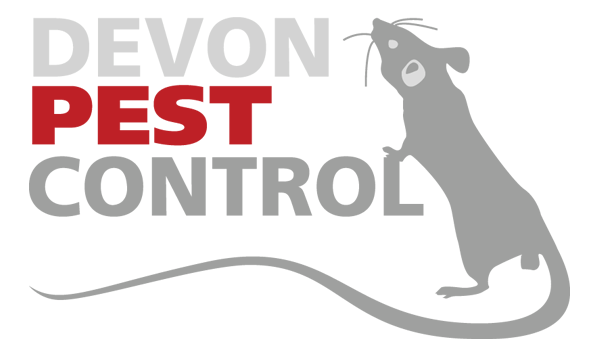In this article, we address the growing concern in the UK of rat and mice population, as well as the ongoing debate for the safe use of rodenticide.
In recent years, the practice behind the use of rodenticides has changed, and not always for the better. This has had an impact on both its effectiveness, as well as inadvertently targeting non-target species.
After examining the extent of rodent infestations and issues in the UK, the 7 points of the code of practice for rodenticides are looked at in more detailed, followed by some key points of debate.
Finally, the article looks at the argument for use of professional pest control companies to deal with rat and mice infestations quickly and easily.
Believe the headlines, and you can be forgiven for thinking that rodent infestations – rats and mice in the UK – are on the increase.
“Pictured: Super-rat ‘the size of a cat’ found in London garden as experts warn of rise of giant rodents”
“Revealed: Britain’s capitals of vermin – Birmingham is worst for rats but Southwark has the most mice, roaches and bed bugs”
Not even one of the most famous landmarks in sporting finesse can escape the rodent, “Manchester Utd tackle mouse ‘infestation’ at Old Trafford”.
And thus, the reputation of both the rat and mouse in the UK falls from grace even more, if you could say rats or mice were ever welcomed.
What are rodents?
 Nearly half of the world mammal species are classified as rodents, with the all rodents from the capybara, hamsters, guinea pigs and porcupines to name a few, all having the same characteristics: a single pair of incisor teeth that continually grow on both the upper and lower jaw. Rabbits and hares were once considered rodents, but now have their own classification.
Nearly half of the world mammal species are classified as rodents, with the all rodents from the capybara, hamsters, guinea pigs and porcupines to name a few, all having the same characteristics: a single pair of incisor teeth that continually grow on both the upper and lower jaw. Rabbits and hares were once considered rodents, but now have their own classification.
As detested as they may be, rodents, like many other animals and mammals, are simply essential in one way or another to the fragile balance of local ecology. They are found worldwide in every continent, except Antarctica. But, rodents and humans do not live in harmony, especially when rodent numbers become an infestation. As well as the damage caused by their constant gnawing, as well as the fact that they all rodent are known to spread disease, some of which can be fatal to humans.
Along with our decreasing tolerance of living with any kind of pest, the rat and mouse population in the UK could possibly be on the increase too, although specific and accurate numbers are hard to come by. Recent prolonged spells of wet weather, including subsequent flooding also mean that rodents seek shelter in human-made environments to escape the rising waters.
With one eye on the dwindling household budget, many homeowners and tenants buy poison or traps from local hardware stores and lay the foundations with which the eliminate their rodent infestation.
All is well, until you consider our apathy for reading instructions on the products, along with placing the poison in harm’s way – it may be safe away from children and pets, but wildlife and non-target species often find the poison. The results are obvious. Non-target species and animals etc. are being poisoned and, as a result, dying.
Add to this that some rats in some cities are allegedly becoming immune to ‘common’ rat poisons, and the picture becomes very bleak indeed.
The answer – a code of practice for the use of rodenticides
With this in mind, there is a concerted campaign, from March 2015 to make everyone aware of best practice when it comes to laying poison.
Refreshingly, the code of practice is NOT just aimed at professional pest controllers but at all ‘professionals’ who may deal with rat poisons and the like, including those willing to take a do-it-yourself approach to rodent eradication by buying over the counter poisons.
Everyone has the responsibility to keep every non-target species safe and thus, the pressure is on that, in spite of the added costs, that homeowners, tenants, businesses and so forth invest in professional pest control services and companies rather than ‘going it alone’.
Common rodenticides
Long-acting anticoagulants (LAACs) are the most common types if rat poisons on sale to the general public in the UK. The active ingredients prevents the rodent’s blood from clotting, thus they eventually bleed to death.
Warfarin is a well-known medication know used in humans, but developed in the 1940s as an attempt to control the rodent population.
Trapping and killing rodents is also common but, with many of us too squeamish to handle dead rodent bodies, nor do we have the stomach to sight the dead body of a rat or mouse, therefore this is not a favoured method of many people.
The problem with poison
But, there are many issues with using poisons to control rodent population and one is secondary poisoning. This is split in to two categories, one of which has already been alluded to and that is the death of non-target species from coming in to direct contact with the poison.
Once consumed by the rat or mouse, the poison once it has despatched the rodent, will remain in its body. The fact that rodent slink away to die, their bodies exposed to other scavengers means that non-target species are also killed in this way. The poison remains active for some time in the decaying body.
The modern-day rodent problem
And thus, the rodent remains a problem. The population of mice, black rats and brown rats still seem to swamp the cities, towns and villages of the UK. Birmingham holds the dubious accolade of being the top place for rodent call outs to professional pest control companies, with 22 requests for rodent assistance per 1,000 households.
As the human and built environment continues to sprawl across the country, the issue with rats and mice will not go away. Hidden within this picture is the need for everyone to act responsibility when it comes to laying poisons or other means the control rodent population.
With one eye of lessening the impact of such treatments on local wildlife and so on, the Campaign for Responsible Rodenticide Use (CRRU) was created. The pest control bodies have embraced it, creating an additional piece of training for pest controllers to back up the correct use of rodenticides.
Many wildlife protection organisations have embraced it too, recognising that their species can be affected by the growing use of rodenticides too. Even when used correctly, not moving the dead body of a poisoned rat is available for the hunting, hungry owl but, the active ingredient has not yet dissipated to safe levels and the owl could be lost too.
Dealing with rodents is essential, not optional
The rodent issue in the UK is a growing concern to many people. As well as posing hygienic issues and the spread of disease to humans, rats and mice present increasingly frustrating problems to many people, in many different situations.
The damage they cause from constant gnawing for both food and nesting material can run in to thousands of pounds worth of damage. They contaminate animal foodstuffs with their droppings and constant urination. They are attracted to areas where food is stored, and they can be found in sewers, drain as well as underground electrical cabling.
As such, the rodent problem in the UK is now of such a concern that there were a range of statutory obligations placed on local authorities, employers, land owners and householders, as well as the food industry to take a proactive approach in the prevention in infestations, and in the dealing of rats and mice on property and land.
The food industry, for example, has a large part to play in ensuring that their factories, storage areas and so forth are maintained as rodent-free as possible. To this effect, many food companies recognise the need to maintain long-term serviced contracts with highly skilled and professional pest control companies.
With such wide ranging and possibly devastating consequences of having rats and mice running around properties and land in large numbers, it makes sense to deal with rodents as quickly as possible.
The CRRU Code of Practice is written with two main rodents in mind – the Norway rat and the house mouse.
What the CRRU wants to achieve
It is a drive to promote the safe use of rodenticides amongst all user groups, from the consumer buying over-the-counter remedies to the professional pest controller, the farmer, the gamekeeper and so on.
And to do this, they have created a 7-point Code of Practice which will be become common place across the UK.
Taking control of the rodent population should not be at the cost of all species, all animals or mammals.
The 7 points
Easy to follow and self-explanatory, the 7 points of the code of conduct are logical steps through the process that many a pest controller would argue, is how they approach every pest infestation assignment. But, bear in mind that this code is for everyone…
Point 1 – ALWAYS plan your approach
Rats and mice are ‘clever’ rodents, attracted to human environments because there are many positives to living in our shadow. But, when we see the rodents around or in our properties, the immediate action tends to be we lay traps and/or poison to be rid of them.
Understanding the urgency is taken in to account with the code but, there needs to be an appreciation of the bigger picture too.
In other words, rather than assuming that the only way is to instantly lay poison, this action should be a little further down the list. Take stock of the situation and the environment. The best way is to ask questions – for example, what is attracting the rats or mice to the area? Is it food or refuse? Is it the flooded river or stream close by?
Rodenticides should have the issue under control within 35 days; if not, the problem is bigger than you think. At this point, there is no substitute for calling in the professional services of a pest control company but, in all honesty, it is probably best to call them right at the start…
Point 2 – Recording where bait is used and where
Knowing where you put the bait is also essential as you will need to be monitoring this area several times a day. The code of practice suggests drawing a simple site map, with the location of bait clearly shown. As soon as the infestation has ended, the bait should be removed from all areas.
Point 3 – Using the right number of bait points
Laying down one bait point for any kind of rodent infestation is not enough and thus, the code of practice suggests laying an adequate number of bait points around the site. However, for the amateur taking their first steps in rodent eradication, this can be information that is difficult to come by. A professional pest controller would have this kind of knowledge and advice.
Point 4 – ALWAYS collect and dispose of rodent bodies
Knowing the devastating implications that poisoned, decaying rodent bodies can have on the local wildlife, searching for and disposing of dead rats or mice is now considered essential. Bodies can be found for some time after the poison has been lifted, and thus regular checks should be made for several days after treatment. Also, bodies can be some distance away from the bait, up to 100 metres in some cases. Carcasses should be disposed of according to the instructions of the bait manufacturer.
Point 5 – NEVER used exposed bait
The cases where other on-target species have been poisoned is data that is not collected, therefore the true extent or impact of exposed or accidentally consumed rodenticide is not known.
There are many products on the market but ensuring you use the one suitable for the circumstances is important, as is knowing the best place to put the bait.
Looking for bait boxes and the like that present as little risk to accidental interference by mammals, animals and birds is essential (as well as unsuspecting humans).
Point 6 – Bait regularly
If it was as simple as placing down a lump of bait on the ground and nothing more, there would be no need for pest controllers who specialise in rodent eradication.
Unfortunately, many homeowners and tenants etc. go wrong at this point as they do not realise that the area will need re-baiting on a regular basis. To both control and eradicate rodents from an area, consistency is key with the right bait, in the right places.
Daily inspection is the minimum but, this depends on the problem being solved; it may need to be more than this. And, don’t forget that this daily baiting ritual will need to be part of the daily hunt for dead rodents.
Point 7 – Collect all bait when the problem is solved
Again, many amateurs leave the bait down once the problem has been solved assuming that any undetected rodents will eat it, and slink off to die a long way from the property.
But, this means that many other non-target species could find the bait and consume it too, thus removing all bait when there is no longer any need for it is essential so that this can be avoided.
The CRRU debate
For many professional pest controllers, the code of practice presents very few surprises; many pest control companies, for example, offer a comprehensive rodent eradication service that includes such activities as daily or twice-daily checks on bait boxes, re-baiting and so on.
For many, ensuring the safety of other animals is top priority, as the pest control sector has long been aware of the need to maintain both an eco-friendly hat, as well as offer sustainable solutions to age-old problems.
The code of practice goes a long way but, concerns remain about how or when it can be enforced. The British Pest Control Association (BPCA) is already creating a certificated course relating to the CRRU of which many pest controllers have already taken advantage.
Concerns remain, however, about how other professionals, from school caretakers, game keepers to others who carry out pest control as part of their normal duties. The training programme, known as the Stewardship Regime will help to consolidate the knowledge and skills needed by anyone who deal with rat or mice ‘infestations’ or control.
The code of practice should also see the end of permanent baiting, unless in exceptional circumstances. There is a fine line between maintaining a long term prevention solution to rodent infestations and simply placing bait in an area, ‘just in case’.
Some suggest that this permanent baiting ban will apply to the outside only, with the interior of buildings not being subjected to the same rules but, the aim overall is clear – maintaining effective, proactive solutions and control measures to prevent rodent infestations, without harming non-target species.
The arguments for professional pest control
Regardless of the arguments, there will always be one school of thought who will argue that the best people to deal with rodent or mice infestations are professional pest controllers.
Many are specialist in rodent control and eradication. Companies may argue that servicing long term contracts with pest controllers is an added expense that they struggle to justify, preferring instead to train their own in-house staff to store, transport and use rodenticides.
Rodents, in particular the rat, are sly, cunning creatures that have learnt to scavenge in the shadow of humans for a long time. They are not creatures that seek our company and yet, they will live happily in our homes, factories, food storage places and so on. When sighted, they rarely show fear only really running off when they detect movement in their direction.
Professional pest controllers can, with experience, skill and knowledge, predict with alarming accuracy where the rats or mice are, how they will move about the space and the best places to bait and so forth.
Their services may be an additional expense but, successful results can be relied on.
In summary
The CRRU Code of Practice is the basis on which the training programme, known as the Stewardship Regime will be built so that those who regularly and frequently deal with rodenticides can be fully trained in not only the right way of using these strong chemicals, but also the best pales to use them so that the rodents are eradicated or controlled, without maiming or killing non-target species.
The code of practice contains 7 points that all professionals will need to follow:
- A planned, strategic approach and solution to the issue
- On a site map, recording the location of the bait
- Using the appropriate number of bait stations
- Collecting and correct disposal of rodent carcasses
- Never using open bait
- Baiting regularly
- Collecting all bait when the infestation is eradicated or under control
Complacency may have led to some rodent control measures becoming obsolete or ineffective thus, the code of practice re-ignites debate how best to control and deal with the rodent population in the UK.






